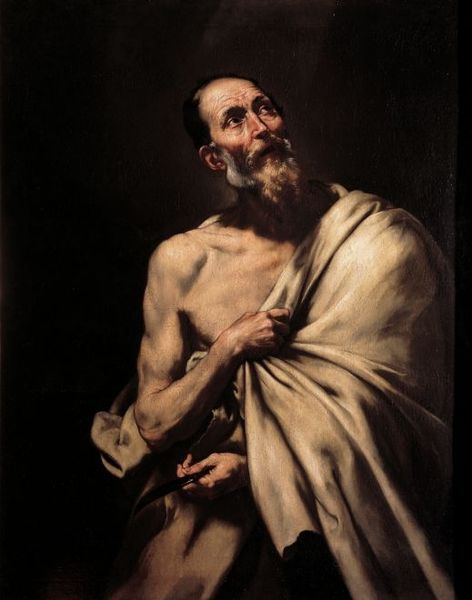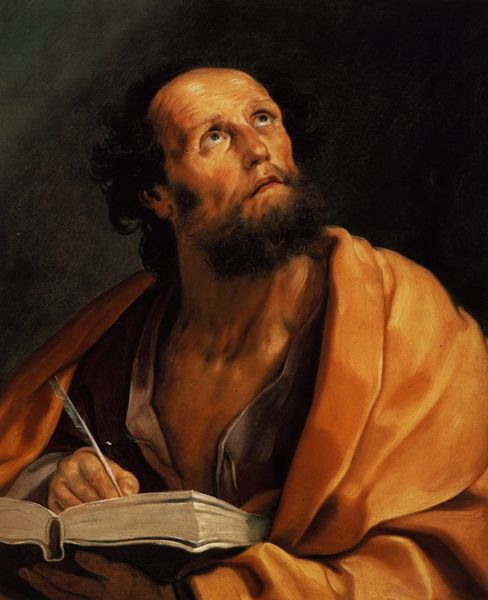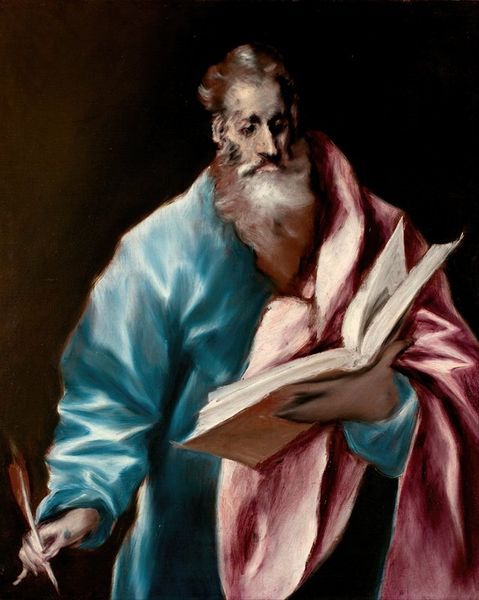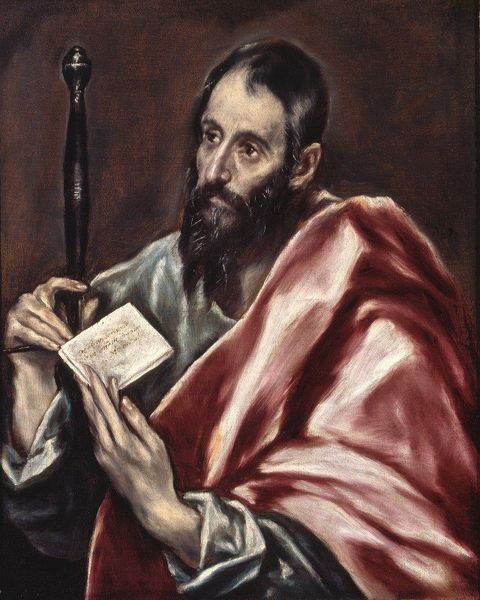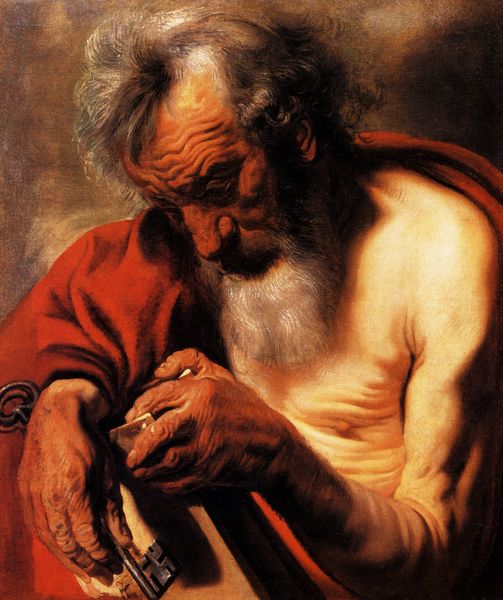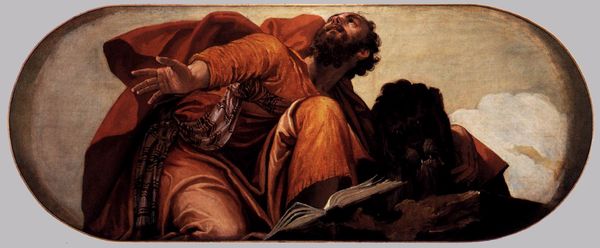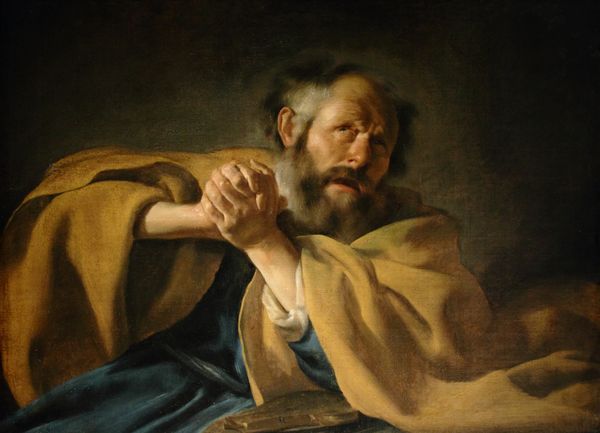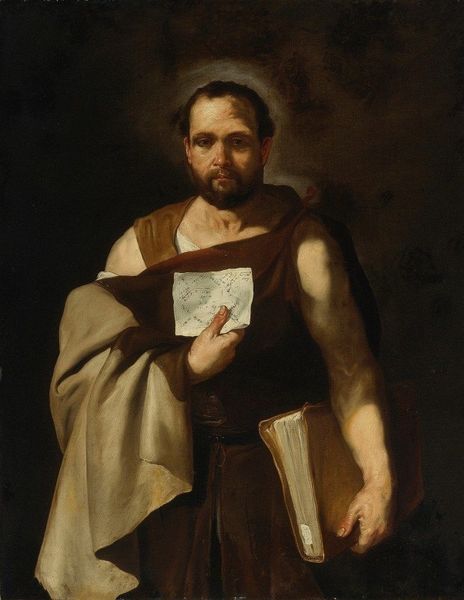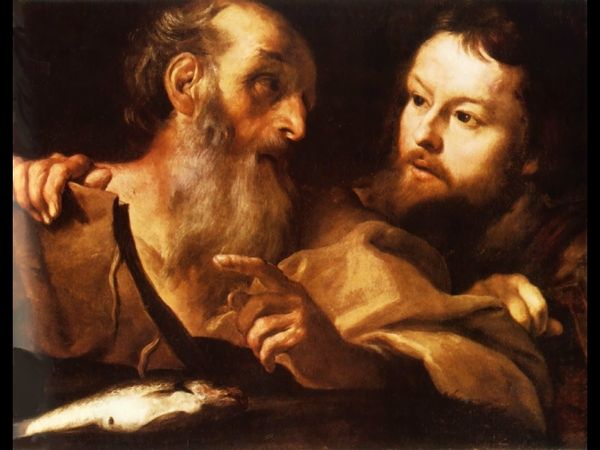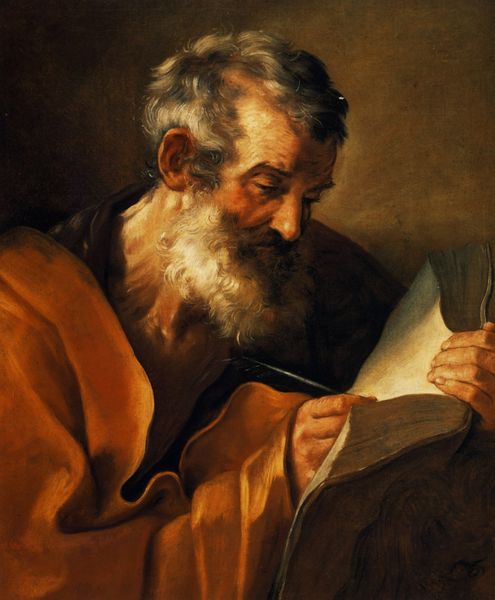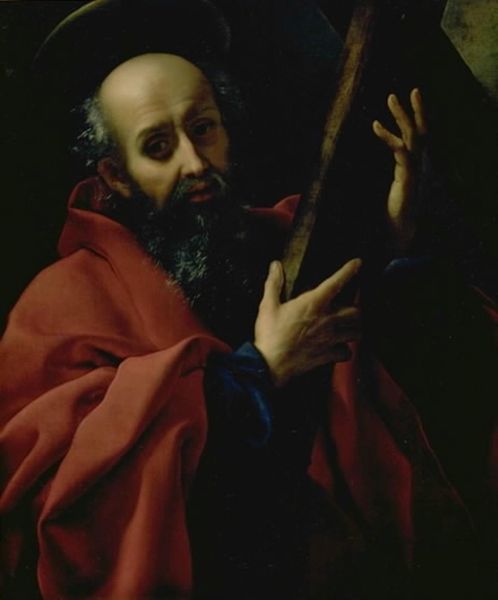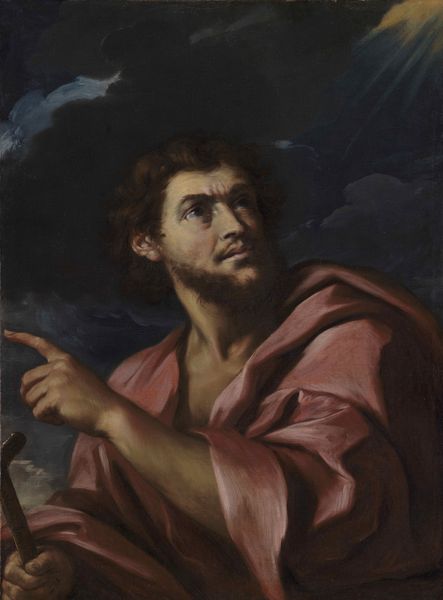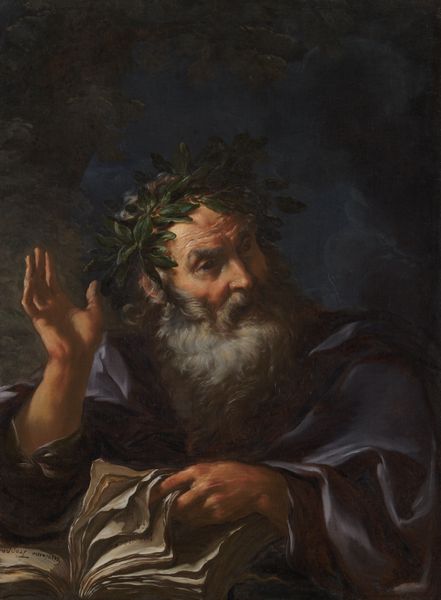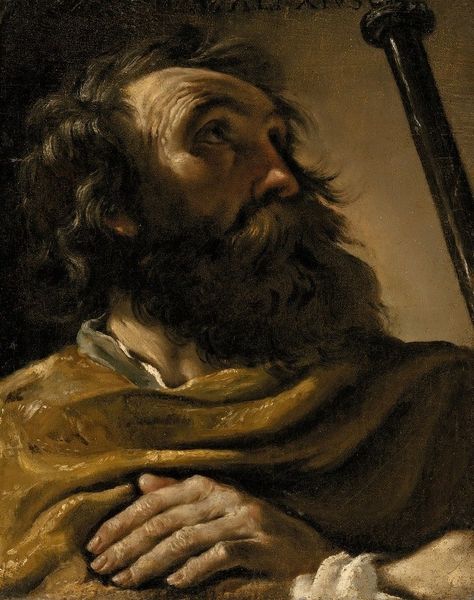
painting, oil-paint
#
portrait
#
baroque
#
painting
#
oil-paint
#
genre-painting
#
history-painting
#
academic-art
#
expressionist
Copyright: Public domain
Curator: Luca Giordano painted this compelling portrait of Heraclitus in 1650, a study in oil that captures the philosopher's renowned melancholy. What's your immediate response? Editor: The contrast is striking, isn't it? Such raw grief, etched into his face, yet surrounded by a garland of such vivid, almost aggressively joyful flowers. It’s a visual paradox. Curator: Precisely. Let's delve into that tension. Giordano is engaging with a long tradition here. Heraclitus, often called the "Weeping Philosopher," serves as a counterpoint to Democritus, the "Laughing Philosopher." They represent opposing ways of engaging with the world: grief versus joy, pessimism versus optimism. It’s a binary meant to prompt contemplation on suffering. Editor: The weeping image is unforgettable. Look at how the light catches the tear tracing its path. What symbolic load does the tear itself carry across eras? In religious art, tears signal profound repentance; here, in this secular context, is it existential sorrow? A commentary on human condition? Curator: Possibly both. We might even consider Giordano’s positioning of Heraclitus as a lament on his own time, an era fraught with political and religious upheaval. This image provides a visual language for contemplating intersectionality between faith and reason. Editor: I’m intrigued by the inscription, too. He holds a stone that literally bears his name – “Heraclito.” It feels… deliberate. Is Giordano playing with ideas of permanence and the written word, ideas surviving time itself? Curator: That's astute. Giordano is inviting us to remember, and question, what it means to be remembered. How history shapes narrative, and what pieces we omit when building collective understandings of influential personas, then and now. Editor: It really gives you pause, doesn’t it? To witness such sorrow made so enduring, encased within art. It becomes more than just an image. It is, itself, a powerful symbolic offering. Curator: A perfect example of the layers of meaning Baroque art offers. I'll leave it to our listeners to further contemplate the duality of Giordano's work and the many paths it puts forth.
Comments
No comments
Be the first to comment and join the conversation on the ultimate creative platform.
